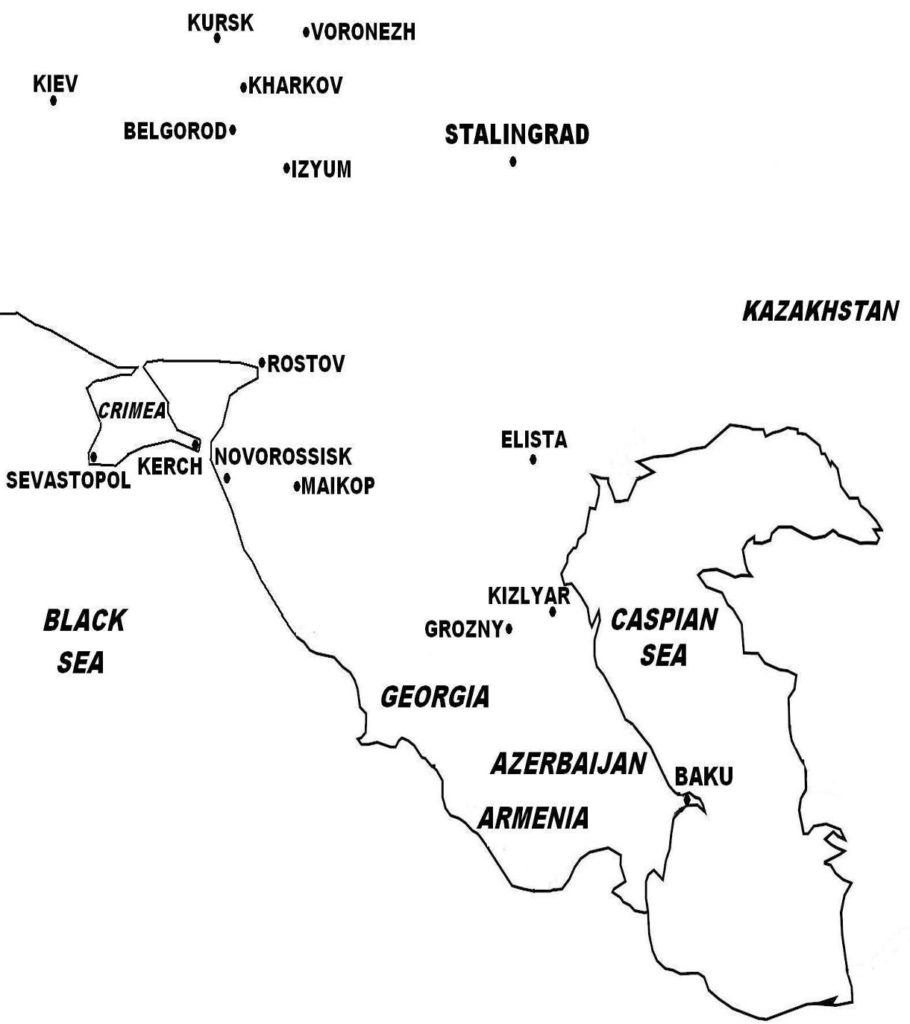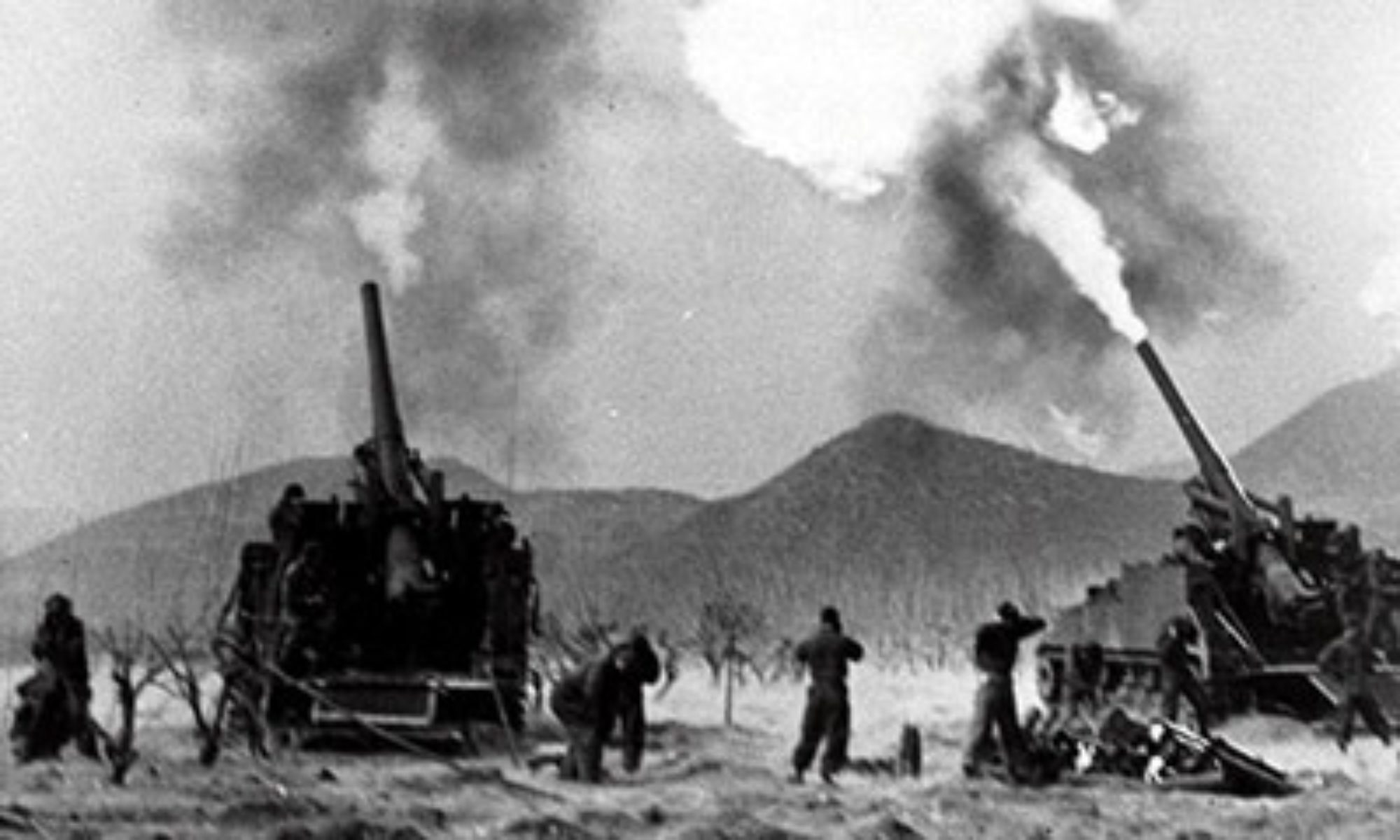In early December 1942, General Erich von Manstein, commander of the newly formed German Army Group Don, which was tasked with securing the gap between German Army Groups A and B, was ready to launch a relief operation to Stalingrad. Began on December 12 under Operation Winter Storm, German Army Group Don succeeded in punching a hold in the Soviet ring and advanced rapidly, pushing aside surprised Red Army units, and came to within 30 miles of Stalingrad on December 19. Through an officer that was sent to Stalingrad, General Manstein asked General Paulus to make a break out towards Army Group Don; he also sent communication to Hitler to allow the trapped forces to break out. Hitler and General Paulus both refused. General Paulus cited the lack of trucks and fuel and the poor state of his troops to attempt a break out, and that his continued hold on Stalingrad would tie down large numbers of Soviet forces which would allow German Army Group A to retreat from the Caucasus.
On December 23, 1942, Manstein canceled the relief operation and withdrew his forces behind German lines, forced to do so by the threat of being encircled by Soviet forces that meanwhile had launched Operation Little Saturn. Operation Little Saturn was a modification of the more ambitious Operation Saturn, which aimed to trap German Army Group A in the Caucasus, but was rapidly readjusted to counter General Manstein’s surprise offensive to Stalingrad. But Operation Little Saturn, the Soviet encirclement of Stalingrad, and the trapped Axis forces so unnerved Hitler that on his orders, German Army Group A hastily withdrew from the Caucasus in late December 1942. German 17th Army would continue to hold onto the Taman Peninsula in the Black Sea coast, and planned to use this as a jump-off point for a possible future second attempt to invade the Caucasus.

(Taken from Battle of Stalingrad – Wars of the 20th Century – World War II in Europe)
Meanwhile to the north, German Army Group B, tasked with capturing Stalingrad and securing the Volga, began its advance to the Don River on July 23, 1942. The German advance was stalled by fierce resistance, as the delays of the previous weeks had allowed the Soviets to fortify their defenses. By then, the German intent was clear to Stalin and the Soviet High Command, which then reorganized Red Army forces in the Stalingrad sector and rushed reinforcements to the defense of the Don. Not only was German Army Group B delayed by the Soviets that had began to launch counter-attacks in the Axis’ northern flank (which were held by Italian and Hungarian armies), but also by over-extended supply lines and poor road conditions.
On August 10, 1942, German 6th Army had moved to the west bank of the Don, although strong Soviet resistance persisted in the north. On August 22, German forces established bridgeheads across the Don, which was crossed the next day, with panzers and mobile spearheads advancing across the remaining 36 miles of flat plains to Stalingrad. On August 23, German 14th Panzer Division reached the Volga River north of Stalingrad and fought off Soviet counter-attacks, while the Luftwaffe began a bombing blitz of the city that would continue through to the height of the battle, when most of the buildings would be destroyed and the city turned to rubble.
On August 29, 1942, two Soviet armies (the 62nd and 64th) barely escaped being encircled by the German 4th Panzer Army and armored units of German 6th Army, both escaping to Stalingrad and ensuring that the battle for the city would be long, bloody, and difficult.
On September 12, 1942, German forces entered Stalingrad, starting what would be a four-month long battle. From mid-September to early November, the Germans, confident of victory, launched three major attacks to overwhelm all resistance, which gradually pushed back the Soviets east toward the banks of the Volga.
By contrast, the Soviets suffered from low morale, but were compelled to fight, since they had no option to retreat beyond the Volga because of Stalin’s “Not one step back!” order. Stalin also (initially) refused to allow civilians to be evacuated, stating that “soldiers fight better for an alive city than for a dead one”. He would later allow civilian evacuation after being advised by his top generals.
Soviet artillery from across the Volga and cross-river attempts to bring in Red Army reinforcements were suppressed by the Luftwaffe, which controlled the sky over the battlefield. Even then, Soviet troops and supplies continued to reach Stalingrad, enough to keep up resistance. The ruins of the city turned into a great defensive asset, as Soviet troops cleverly used the rubble and battered buildings as concealed strong points, traps, and killing zones. To negate the Germans’ air superiority, Red Army units were ordered to keep the fighting lines close to the Germans, to deter the Luftwaffe from attacking and inadvertently causing friendly fire casualties to its own forces.
The battle for Stalingrad turned into one of history’s fiercest, harshest, and bloodiest struggles for survival, the intense close-quarter combat being fought building-to-building and floor-to-floor, and in cellars and basements, and even in the sewers. Surprise encounters in such close distances sometimes turned into hand-to-hand combat using knives and bayonets.
By mid-November 1942, the Germans controlled 90% of the city, and had pushed back the Soviets to a small pocket with four shallow bridgeheads some 200 yards from the Volga. By then, most of German 6th Army was locked in combat in the city, while its outer flanks had become dangerously vulnerable, as they were protected only by the weak armies of its Axis partners, the Romanians, Italians, and Hungarians. Two weeks earlier, Hitler, believing Stalingrad’s capture was assured, redeployed a large part of the Luftwaffe to the fighting in North Africa.
Unbeknown to the Germans, in the previous months, the Soviet High Command had been sending large numbers of Red Army formations to the north and southeast of Stalingrad. While only intending to use these units in sporadic counter-attacks in support of Stalingrad, by November 1942, Stalin and his top generals had reorganized these forces for a major counter-offensive codenamed Operation Uranus involving an enormous force of 1.1 million troops, 1,000 tanks, 14,000 artillery pieces, and 1,300 planes, aimed at cutting off and encircling German 6th Army and units of 7th Panzer Army in Stalingrad. German intelligence had detected the Soviet buildup, but Hitler ignored the warning of his general staff, as by now he was firmly set on taking Stalingrad at all costs.
On November 19, 1942, the Soviet High Command launched Operation Uranus, a double envelopment maneuver, with the Soviet Southwestern Front attacking the Axis northern flank held by the Romanian 3rd Army. The next day, the Soviet Stalingrad Front thrust from the south of the Axis flank, with the brunt of the attack falling on Romanian 4th Army. The two Romanian Armies, lacking sufficient anti-tank weapons and supported only with 100 obsolete tanks, were overwhelmed by sheer numbers, and on November 22, the two arms of the Soviet pincers linked up at Kalach. German 6th Army, elements of 4th Panzer Army, and remnants of the Romanian armies, comprising some 250,000-300,000 troops, were trapped in a giant pocket in Stalingrad.
The German High Command asked Hitler to allow the trapped forces to make a break out, which was refused. Also on many occasions, General Friedrich Paulus, commander of German 6th Army, made similar appeals to Hitler, but was turned down. Instead, on November 24, 1942, Hitler advised General Paulus to hold his position at Stalingrad until reinforcements could be sent or a new German offensive could break the encirclement. In the meantime, the trapped forces would be supplied from the air. Hitler had been assured by Luftwaffe chief Hermann Goering that the 700 tons/day required at Stalingrad could be delivered with German transport planes. However, the Luftwaffe was unable to deliver the needed amount, despite the addition of more transports for the operation, and the trapped forces in Stalingrad soon experienced dwindling supplies of food, medical supplies, and ammunition. With the onset of winter and the temperature dropping to –30°C (–22°F), an increasing number of Axis troops, yet without adequate winter clothing, suffered from frostbite. At this time also, the Soviet air force had began to achieve technological and combat parity with the Luftwaffe, challenging it for control of the skies and shooting down increasing numbers of German planes.
Meanwhile, the Red Army strengthened the cordon around Stalingrad, and launched a series of attacks that slowly pushed the trapped forces to an ever-shrinking perimeter in an area just west of Stalingrad.
In early December 1942, General Erich von Manstein, commander of the newly formed German Army Group Don, which was tasked with securing the gap between German Army Groups A and B, was ready to launch a relief operation to Stalingrad. Began on December 12 under Operation Winter Storm, German Army Group Don succeeded in punching a hold in the Soviet ring and advanced rapidly, pushing aside surprised Red Army units, and came to within 30 miles of Stalingrad on December 19. Through an officer that was sent to Stalingrad, General Manstein asked General Paulus to make a break out towards Army Group Don; he also sent communication to Hitler to allow the trapped forces to break out. Hitler and General Paulus both refused. General Paulus cited the lack of trucks and fuel and the poor state of his troops to attempt a break out, and that his continued hold on Stalingrad would tie down large numbers of Soviet forces which would allow German Army Group A to retreat from the Caucasus.
On December 23, 1942, Manstein canceled the relief operation and withdrew his forces behind German lines, forced to do so by the threat of being encircled by Soviet forces that meanwhile had launched Operation Little Saturn. Operation Little Saturn was a modification of the more ambitious Operation Saturn, which aimed to trap German Army Group A in the Caucasus, but was rapidly readjusted to counter General Manstein’s surprise offensive to Stalingrad. But Operation Little Saturn, the Soviet encirclement of Stalingrad, and the trapped Axis forces so unnerved Hitler that on his orders, German Army Group A hastily withdrew from the Caucasus in late December 1942. German 17th Army would continue to hold onto the Taman Peninsula in the Black Sea coast, and planned to use this as a jump-off point for a possible future second attempt to invade the Caucasus.
Meanwhile in Stalingrad, by early January 1943, the situation for the trapped German forces grew desperate. On January 10, the Red Army launched a major attack to finally eliminate the Stalingrad pocket after its demand to surrender was rejected by General Paulus. On January 25, the Soviets captured the last German airfield at Stalingrad, and despite the Luftwaffe now resorting to air-dropping supplies, the trapped forces ran low on food and ammunition.
With the battle for Stalingrad lost, on January 31, 1943, Hitler promoted General Paulus to the rank of Field Marshal, hinting that the latter should take his own life rather than be captured. Instead, on February 2, General Paulus surrendered to the Red Army, along with his trapped forces, which by now numbered only 110,000 troops. Casualties on both sides in the battle of Stalingrad, one of the bloodiest in history, are staggering, with the Axis losing 850,000 troops, 500 tanks, 6,000 artillery pieces, and 900 planes; and the Soviets losing 1.1 million troops, 4,300 tanks, 15,000 artillery pieces, and 2,800 planes. The German debacle at Stalingrad and withdrawal from the Caucasus effectively ended Case Blue, and like Operation Barbarossa in the previous year, resulted in another German failure.
